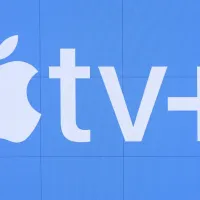The landscape of soccer broadcasting has undergone a seismic shift in recent years. Streaming services are displacing traditional television as the primary home for the most coveted competitions. Major tournaments like the World Cup and Euros air on conventional networks like CTV and TSN in Canada, leveraging their unrivaled reach. However, prominent leagues across Europe and the Americas have increasingly migrated their rights packages to digital platforms.
How Canada leads way in soccer streaming
Big leagues on available via streaming
The UEFA Champions League, once the crown jewel property for TSN, moved exclusively to streaming on DAZN in 2018. Serie A and Germany’s Bundesliga followed suit, migrating completely to streaming platforms on Fubo and DAZN, respectively. Spain’s LaLiga is shown on traditional TV networks like TSN and RDS in Canada. Still, a majority of matches are only available via TSN’s streaming app. This hybrid model illustrates how even conventional broadcasters now leverage streaming to maximize revenue.
New services being added
New entrants like Paramount+ have joined the fray in Canada. The streaming platform secured coveted rights like the UEFA Women’s Champions League and CONCACAF tournaments. Niche streamers offer access to domestic leagues in South America and Asia. For example, Canada’s own Canadian Premier League bypassed traditional TV entirely. Now, all matches are available through OneSoccer. Even the Premier League, long considered an untouchable TV product, saw matches shift to Fubo.
Growing competition but also cost
Streaming’s growth shows no signs of abating. Moreover, experts anticipate more iconic soccer properties to test the direct-to-consumer market in the coming years. The competition for streaming subscribers is intense, with platforms banking on diehard soccer fans to anchor their customer bases. Some see fragmented rights packages as an obstacle. Yet, most observers view expanded choice and access as a definitive win for fans. They are no longer tethered to cable TV bundles and pesky blackout rules.
But the sheer scope of services can add up in individual costs. For now, services like DAZN and Paramount+ have gained an early advantage in a rapidly evolving landscape. Traditional networks still cling to prized assets like the World Cup for now. Make no mistake, the tide turned toward streaming soccer.
Canada embraced streaming soccer coverage. It foreshadows a similar trajectory in the United States. As rights come up for renewal, expect American leagues and competitions to continue following the lead of their northern neighbors. The trend is, and will continue to be, the move to direct-to-consumer platforms.
For example, MLS and Apple signed their historic 10-year deal worth $2.5 billion. This is the league’s first exclusive streaming package. As a result, it represents a major shift away from the traditional networks the league used since its inception. If other major US sports go the same route, Canada’s soccer streaming revolution will have proven truly trailblazing.














